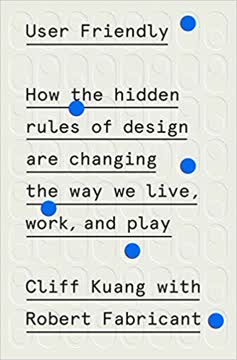Key Takeaways
1. User-friendliness is an evolving ideal, shaped by history and technology.
Today, alluringly designed gadgetry has remade the texture of everyday life, from how we make money to how we make friends to how we make babies.
Definitions and evolution. User-friendliness, initially a term for easy-to-use computing, has expanded to encompass accessibility and manageability in various aspects of life. Its meaning has evolved over time, reflecting technological advancements and changing user expectations.
Historical context. The concept of user-friendliness emerged from a need to bridge the gap between complex machines and their operators, particularly in computing. Early examples include Harlan Crowder's use of the term to describe computer programs and Apple's marketing of the Macintosh as an intuitive machine.
Ubiquity and impact. User-friendliness has become a standard by which we judge the designed world, influencing our interactions with technology, business, society, and even philanthropy. It has transformed everyday life, from how we work and communicate to how we access information and entertainment.
2. Confusion arises from poor design, hindering human-machine communication.
The plant and the men were talking past each other: The plant hadn’t been designed to anticipate the imaginations of men; the men couldn’t imagine the workings of a machine.
Three Mile Island. The Three Mile Island nuclear accident serves as a stark example of how poor design can lead to confusion and disaster. The control room's inscrutable layout, misleading indicators, and lack of feedback contributed to operator errors and a near-meltdown.
Design flaws. The control panel at Three Mile Island had no abiding logic that a user could understand. There were fourteen different meanings for red, and eleven for green. The lights were sometimes above the control they corresponded to, sometimes off to the side.
Feedback is key. The absence of clear feedback, such as a lying light and temperature readouts printing "???," prevented operators from understanding the system's state and making informed decisions. This highlights the importance of feedback in establishing effective human-machine communication.
3. Industry embraced user-friendly design to drive consumption and social progress.
Design is the silent salesman.
Henry Dreyfuss. Henry Dreyfuss, a pioneer of industrial design, recognized the power of user-friendly design to drive consumer demand and improve lives. He believed that understanding users' needs and preferences was essential for creating successful products.
Shift in focus. Dreyfuss shifted the focus from what to make and how to make it to whom to make it for. He emphasized the importance of considering the user's perspective and creating products that were both functional and aesthetically pleasing.
Consumption as progress. Dreyfuss and other industrial designers promoted the idea that consumption was a form of social progress, with well-designed products contributing to a better quality of life. This ethos helped transform American manufacturing and culture.
4. World War II spurred human-centered design to minimize error and maximize efficiency.
The machine had to be built for Homo sapiens to operate.
Pilot error. World War II highlighted the limitations of human performance in complex systems, leading to the development of human-centered design principles. Researchers like Paul Fitts and Alphonse Chapanis sought to minimize "pilot error" by designing machines that were easier to use and understand.
Ergonomics and standardization. Chapanis advocated for shape-coding knobs, standardizing instrument positions, and ensuring controls moved in a "natural" direction. These innovations aimed to reduce confusion and improve operator performance.
Human factors. The war effort also spurred advancements in psychophysics, such as amplifying consonants in radio transmissions to improve clarity. These efforts reflected a growing recognition of the importance of human factors in machine design.
5. Trust is built when machines mimic human interaction and understand social cues.
Goddamn this business of believing that machines would work for the people using them.
Beyond engineering. The success of self-driving cars depends not only on engineering but also on building trust with users. This requires designing machines that mimic human interaction and understand social cues.
Socially acceptable behavior. The way a self-driving car behaves, such as its braking patterns and lane changes, can influence pedestrians' and passengers' trust. Smooth, predictable movements and clear communication of intent are essential for building confidence.
Politeness and transparency. Machines that are polite, transparent, and honest about their limitations are more likely to gain user trust. This involves designing interfaces that provide clear feedback, explain decision-making processes, and avoid misleading or deceptive practices.
6. Metaphors bridge the gap between the unfamiliar and the intuitive, guiding user understanding.
Design is nothing more—and nothing less—than creating artifacts imbued with such shared understanding, legible to their users.
Defining the unknown. Metaphors serve as bridges between the unfamiliar and the intuitive, helping users understand new technologies and concepts. They provide a framework for interpreting complex systems and predicting their behavior.
Examples of metaphors. The "desktop" metaphor in computing, the "in-box" metaphor in email, and the "feed" metaphor in social media all rely on familiar concepts to make new technologies more accessible. The phone icon is a handset.
Limitations of metaphors. Metaphors can also have limitations, as seen in the case of the App Store, which, by presenting apps as stand-alone products, obscures the interconnected nature of the internet. Over time, metaphors can become outdated or misleading, requiring new ones to be developed.
7. Empathy, industrialized, drives innovation by understanding user needs and pain points.
I assess people with a grain of salt. I don’t know that I do it consciously. I just assume there’s more. There’s only one type of person I can’t understand, and it’s people who are dismissive.
Industrialized empathy. Design thinking, user-centered design, and user experience are all forms of industrialized empathy, emphasizing the importance of understanding user needs and pain points. These processes involve immersing designers in the lives of users and observing their behaviors.
IDEO and design thinking. IDEO played a key role in popularizing design thinking, promoting a collaborative, iterative approach to problem-solving. The company's methods have been adopted by organizations across various industries, from technology to healthcare.
Benefits of empathy. By understanding user needs, designers can create products and services that are more relevant, effective, and satisfying. Empathy also helps designers identify unmet needs and opportunities for innovation.
8. Personalization, while convenient, raises ethical questions about data privacy and manipulation.
We need to recognize that if we don’t consider these psychological issues, we’re not going to get the right effect.
Convenience vs. control. While personalization can enhance user experience, it also raises ethical concerns about data privacy and manipulation. The use of algorithms to tailor content and recommendations can create filter bubbles and reinforce existing biases.
Facebook's Like button. The Facebook Like button, while intended to promote positivity, has contributed to the spread of misinformation and the polarization of online discourse. This highlights the unintended consequences of seemingly benign design choices.
The need for transparency. To address these concerns, designers must prioritize transparency and user control. Users should be informed about how their data is being used and given the ability to customize their experiences and protect their privacy.
9. The user-friendly paradox: Ease of use can lead to a loss of control and critical thinking.
The scariest things are often the easiest to forget.
Automation paradox. As machines become more automated, humans may become less skilled and attentive, leading to a decline in overall performance. This phenomenon, known as the automation paradox, highlights the importance of maintaining human involvement in critical tasks.
User-friendly paradox. Similarly, as gadgets become easier to use, they may also become more opaque, making it harder for users to understand their inner workings and exercise control. This can lead to a loss of critical thinking and a reliance on automated systems.
The need for balance. To mitigate these risks, designers must strive to strike a balance between ease of use and user empowerment. This involves creating interfaces that are both intuitive and transparent, allowing users to understand and control the technology they use.
10. The future of design lies in creating humane technology that aligns with our values and aspirations.
We were building technology for people, but the technologists didn’t understand people.
Beyond user-friendliness. The future of design requires moving beyond mere user-friendliness and creating technology that is humane, ethical, and aligned with our values. This involves considering the broader societal impacts of design decisions and prioritizing human well-being.
The role of designers. Designers have a responsibility to advocate for responsible technology and to challenge the status quo. This requires a shift in mindset, from simply creating products that are easy to use to creating products that promote human flourishing.
A call to action. By embracing a more holistic and ethical approach to design, we can create a user-friendly world that is not only convenient and efficient but also meaningful and fulfilling. This requires a commitment to understanding human needs, promoting transparency, and empowering users to make informed choices.
Last updated:
FAQ
1. What is User Friendly: How the Hidden Rules of Design Are Changing the Way We Live, Work, and Play by Cliff Kuang and Robert Fabricant about?
- Exploration of user-friendly design: The book traces the evolution of user-friendly design, showing how understanding human behavior and psychology has shaped products and systems to be more intuitive.
- Impact on society and technology: It examines how design influences not just gadgets but entire systems, from nuclear reactors to theme parks and digital platforms.
- Critical perspective: The authors discuss both the benefits and dangers of user-friendly design, including its role in fostering empathy, personalization, addiction, and loss of control.
2. Why should I read User Friendly by Cliff Kuang and Robert Fabricant?
- Insight into design’s hidden rules: The book reveals the often-invisible principles behind design decisions that shape our daily experiences with technology and environments.
- Understanding technology’s social impact: It offers a critical lens on how user-friendly design affects social behaviors, trust, and even political outcomes.
- Practical wisdom for everyone: Readers gain knowledge about human-centered design principles and the challenges of creating seamless experiences, useful for both designers and consumers.
3. What are the key takeaways from User Friendly by Cliff Kuang and Robert Fabricant?
- Design shapes daily life: User-friendly design is central to how we interact with technology, influencing everything from safety to satisfaction.
- Empathy and feedback are crucial: Successful design requires understanding users’ needs and providing clear, timely feedback.
- Metaphors and mental models matter: Designers use familiar concepts to help users understand new technologies, but shifting these can cause confusion.
- User-friendly design has risks: While it can empower, it can also lead to addiction, loss of control, and social fragmentation if not handled responsibly.
4. What are the best quotes from User Friendly by Cliff Kuang and Robert Fabricant and what do they mean?
- “Disability isn’t a limitation of the user but a mismatch between the user and the world we’ve designed.” This highlights the importance of inclusive design and the responsibility of designers to create accessible products.
- “Feedback is the foundation of interaction.” This underscores how essential clear, timely feedback is for users to feel in control and confident.
- “Metaphors shape behavior.” The book emphasizes that the metaphors designers choose influence how users interact with and understand technology.
- “The ultimate goal is technology that becomes invisible and seamlessly integrated into human life.” This quote encapsulates the vision of user-friendly design as an enabler, not a barrier.
5. What are the key principles of user-friendly design explained in User Friendly by Cliff Kuang and Robert Fabricant?
- Start with the user: Design begins by deeply understanding real users’ needs, behaviors, and contexts, often through ethnographic research.
- Make the invisible visible: Effective feedback loops are essential so users know what’s happening and can trust the system.
- Build on existing behavior: Observing and leveraging current user habits reveals authentic needs and opportunities for innovation.
- Use metaphors and mental models: Metaphors help users grasp complex systems, making new technology more approachable.
- Form follows emotion: Emotional connections can make products more engaging and satisfying, even compensating for functional shortcomings.
6. How does User Friendly by Cliff Kuang and Robert Fabricant explain the role of empathy in design?
- Industrialized empathy: The book shows how empathy has been systematized in design processes to better anticipate and meet user needs.
- Inclusive design: Empathy extends to designing for underserved or disabled populations, reframing disability as a design challenge rather than a user flaw.
- Empathy as a design material: Understanding users’ emotional and social contexts is crucial for creating products that resonate and foster trust.
7. What is “industrialized empathy” in User Friendly by Cliff Kuang and Robert Fabricant, and how is it applied?
- Definition and origins: Industrialized empathy is a systematic process of understanding users’ real needs through observation, immersion, and iterative prototyping, popularized by firms like IDEO.
- Process and methodology: It involves uncovering latent needs, testing prototypes with users, and embracing failure as a learning tool.
- Impact on innovation: This approach has improved products from consumer electronics to public services and is now widely adopted in business and design.
8. How does User Friendly by Cliff Kuang and Robert Fabricant explain the importance of feedback in user-friendly design?
- Foundation of interaction: Feedback connects user intentions with machine responses, letting users know if their actions succeeded or failed.
- Everyday examples: From the click of a toaster to the glow of a smartphone, feedback reassures users and guides their next steps.
- Broader implications: Feedback loops influence behaviors in areas like healthcare, social trust, and AI, making them a cornerstone of modern technology.
9. How does User Friendly by Cliff Kuang and Robert Fabricant use the Three Mile Island disaster to illustrate design failures?
- Overwhelming complexity: The control room’s hundreds of dials and alarms provided inconsistent and misleading signals, overwhelming operators.
- Poor feedback and mental models: Operators couldn’t form a coherent understanding of the reactor’s state due to illogical panel layouts and misleading indicators.
- Human error as design failure: The disaster resulted from machines and humans “talking past each other,” not operator stupidity, highlighting the need for user-friendly design.
10. What is the significance of metaphors and mental models in User Friendly by Cliff Kuang and Robert Fabricant?
- Metaphors as mental models: Designers use metaphors to help users understand new technologies by relating them to familiar concepts, like the desktop metaphor for computers.
- Shaping user behavior: Metaphors carry implicit rules and expectations, guiding how users interact with products.
- Challenges with shifting metaphors: Changes in metaphors can cause confusion or resistance, as seen in transitions to new technologies or interface paradigms.
11. What are the dangers or perils of user-friendly design discussed in User Friendly by Cliff Kuang and Robert Fabricant?
- Addiction through variable rewards: Digital products use unpredictable rewards to hook users, creating compulsive behaviors.
- Loss of control and transparency: Seamless interfaces can become opaque, making it harder for users to understand or influence technology.
- Social fragmentation and misinformation: Features like the Like button and algorithmic feeds can create echo chambers and amplify tribalism, with real-world consequences.
12. What is the “automation paradox” and “user-friendly paradox” in User Friendly by Cliff Kuang and Robert Fabricant?
- Automation paradox: As machines automate more tasks, humans become less practiced and capable, increasing reliance on automation and risk during failures.
- User-friendly paradox: Making products easier to use can make them more mysterious, reducing users’ ability to question or control them.
- Design implications: Designers must balance ease of use with transparency and user empowerment to avoid dependency and loss of skills.
Review Summary
User Friendly receives mostly positive reviews for its engaging exploration of user-centered design history. Readers appreciate the well-researched anecdotes and insights into how design impacts daily life. Many find it enlightening for both designers and non-designers. Some criticize the book's organization and verbosity, particularly in later chapters. Overall, reviewers praise the book for its thought-provoking content on the evolution of user-friendly design and its implications for technology and society.
Similar Books
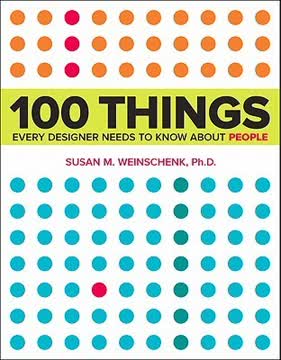
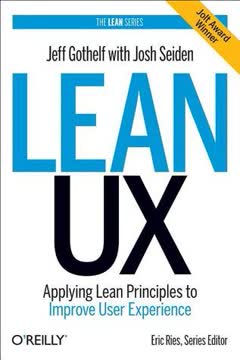
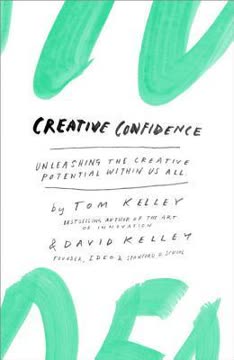

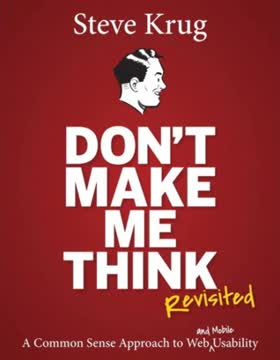

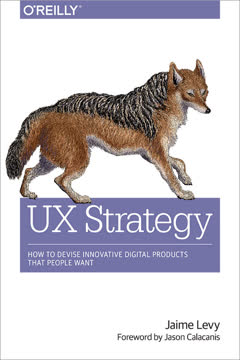
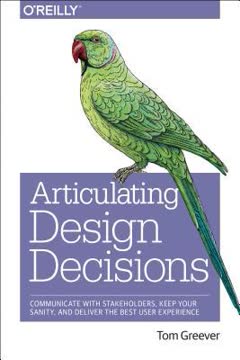
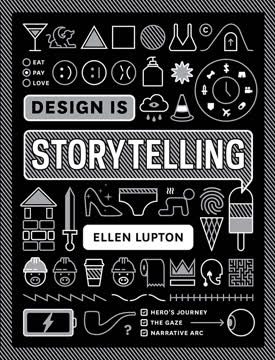
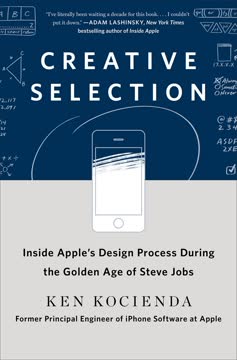
Download PDF
Download EPUB
.epub digital book format is ideal for reading ebooks on phones, tablets, and e-readers.
